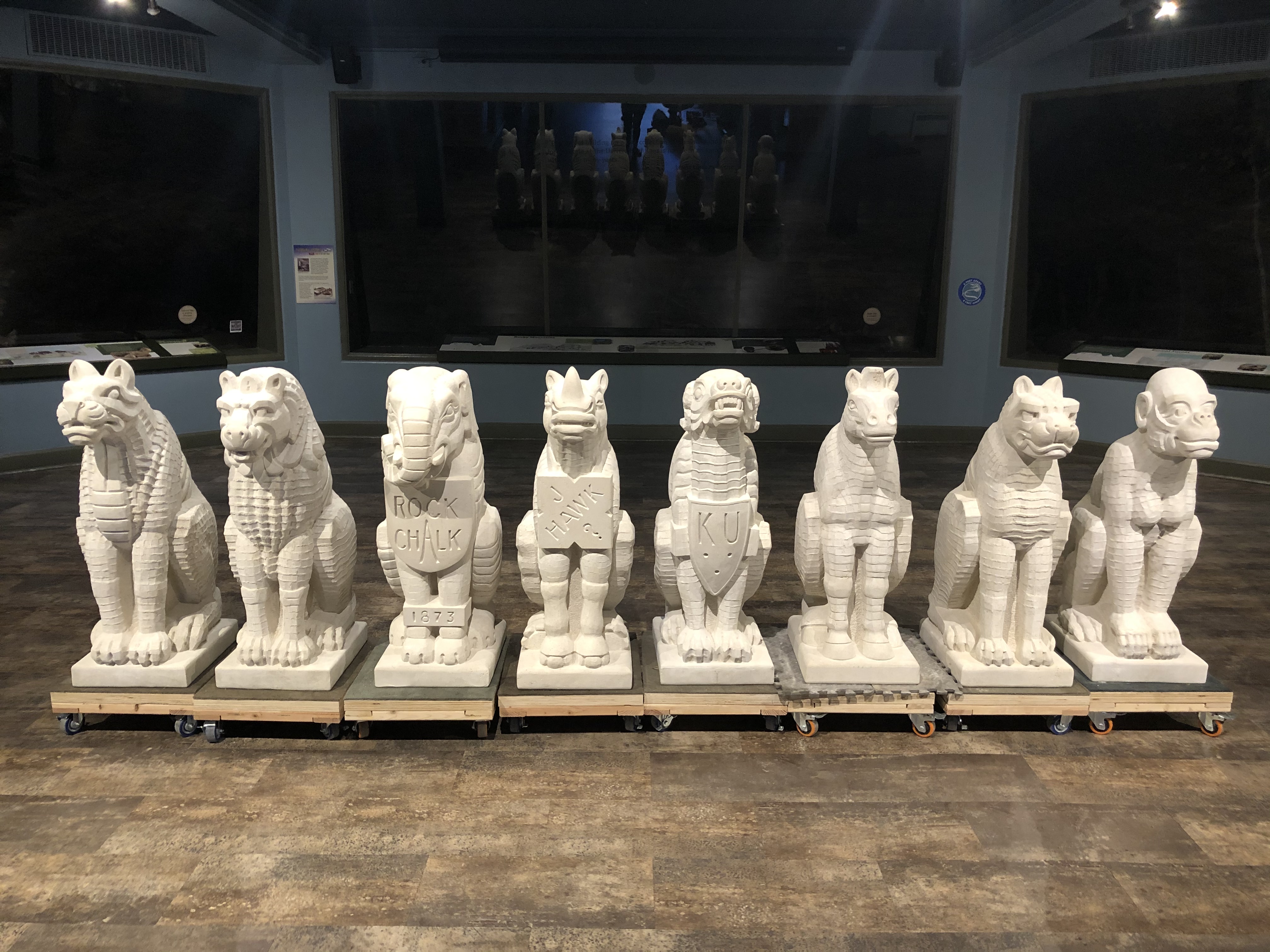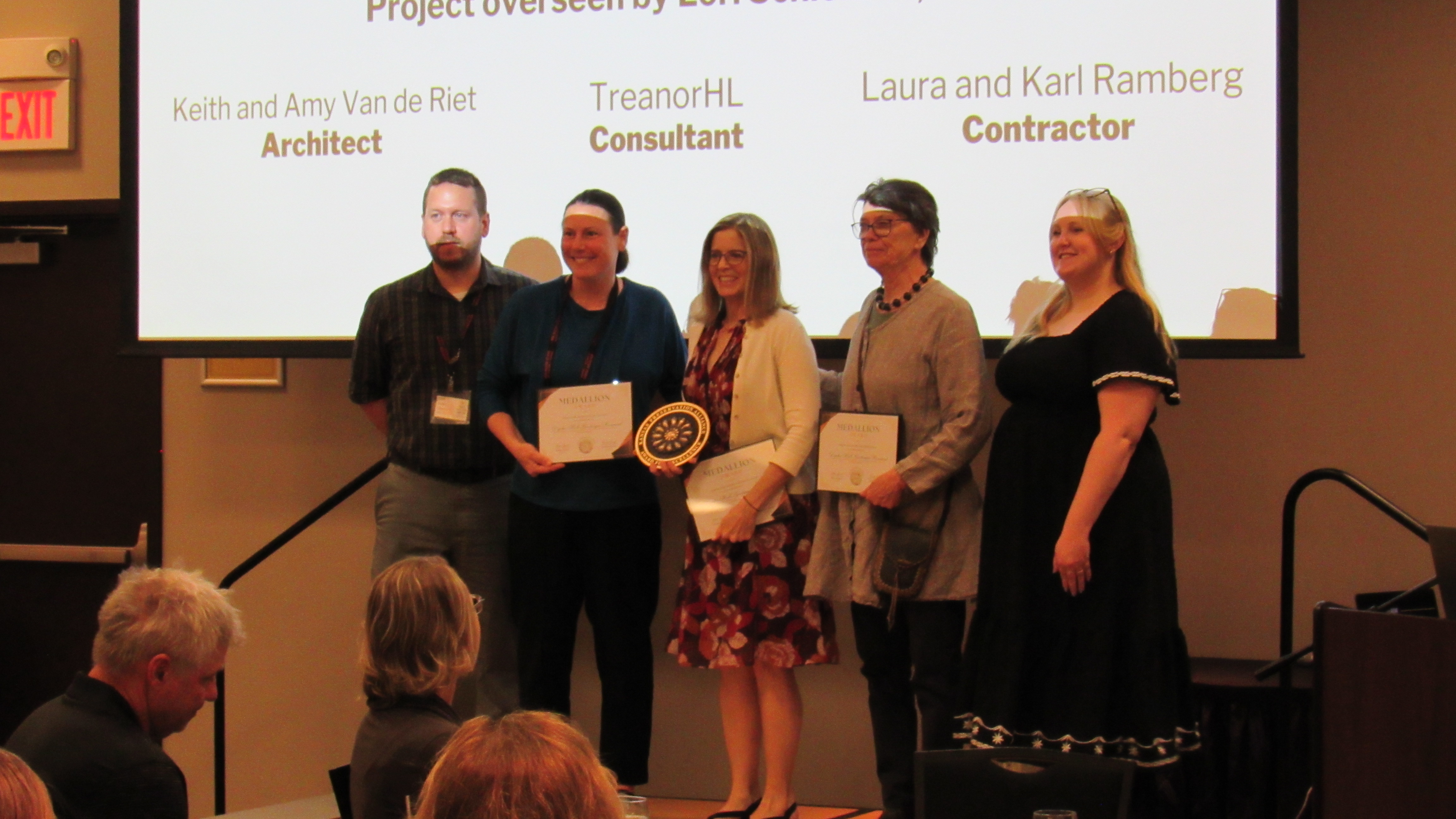Grotesque Renewal Project honored with historic preservation award.

LAWRENCE – The Dyche Hall Grotesque Renewal Project received the Medallion Award, the highest award bestowed by the Kansas Preservation Alliance, at the 2024 Kansas State Preservation Conference on May 17 in Newton.
The project led by local artists Karl and Laura Ramberg and KU architecture faculty Keith and Amy Van de Riet began in 2017 and combined traditional stonecraft with modern 3D imaging to re-carve the eight limestone grotesques perched on Dyche Hall, which houses the Biodiversity Institute and Natural History Museum at the University of Kansas.
The original grotesques were created by Joseph Roblado Frazee and his son Vitruvius and kept a watchful eye over Jayhawk Boulevard for over 100 years. In 2017, the limestone creatures were removed due to deterioration and were on view at the KU Natural History Museum, while the new, hand-carved statues were created by the Rambergs.
By November 2020, all eight grotesques were completed thanks to the skills and dedication of Karl, Laura, Keith and Amy and by 2022, they were placed atop Dyche Hall.

“Having the Medallion Award bestowed to the Grotesque Renewal Project is the perfect ending to an amazing project,” said Amy Van de Riet. “This award is a reflection of the stewardship of the KU Biodiversity Institute, the generosity of donors, and the community of Lawrence to have retained such talented stone carvers."
This project’s success is shared among many, including project manager Lori Schlenker, associate director of collections and facilities at the KU Biodiversity Institute and Natural History Museum; project consultant and architect Julia Manglitz at TreanorHL; and especially the 80 plus donors who contributed to the overall rejuvenation project.
The KU Natural History Museum is part of the KU Biodiversity Institute, a KU designated research center studying the biological diversity of the planet. The museum is open to the public Tuesday-Saturday, 9 PM-5 PM, and Sunday, 12-4 PM, and is free, though donations are welcome. Learn more by visiting the KU Biodiversity Institute and Natural History Museum's website.